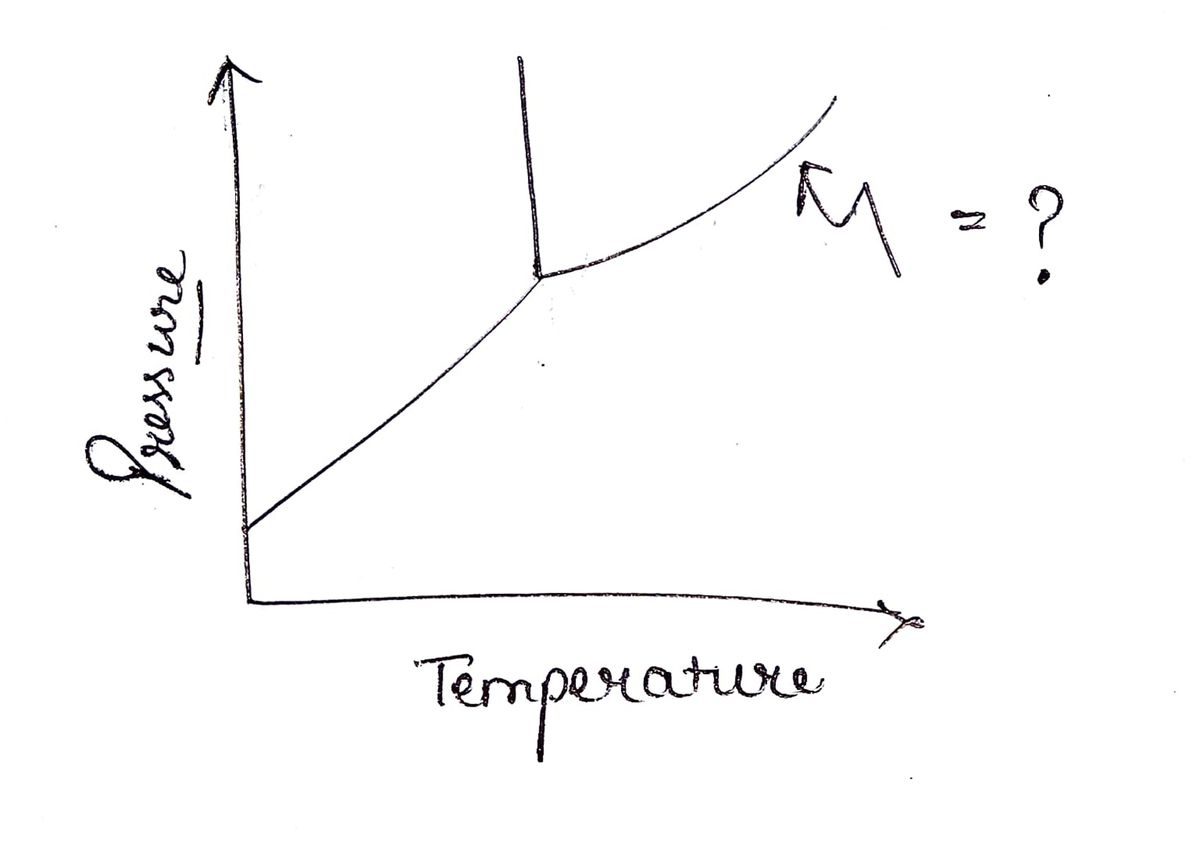What does the line indicated in the following phase diagram represent? (s = solid; != liquid; g = gas) Pressure (atm) a) Temperature (°C) s-g boundary b) s-s boundary c) s-t boundary d) triple point e) {-g boundary
What does the line indicated in the following phase diagram represent? (s = solid; != liquid; g = gas) Pressure (atm) a) Temperature (°C) s-g boundary b) s-s boundary c) s-t boundary d) triple point e) {-g boundary
Chemistry
10th Edition
ISBN:9781305957404
Author:Steven S. Zumdahl, Susan A. Zumdahl, Donald J. DeCoste
Publisher:Steven S. Zumdahl, Susan A. Zumdahl, Donald J. DeCoste
Chapter1: Chemical Foundations
Section: Chapter Questions
Problem 1RQ: Define and explain the differences between the following terms. a. law and theory b. theory and...
Related questions
Question

Transcribed Image Text:**Title: Understanding Phase Diagrams**
**Question:**
What does the line indicated in the following phase diagram represent? (s = solid; l = liquid; g = gas)
**Diagram Explanation:**
The diagram is a phase diagram with axes labeled as Pressure (atm) on the vertical axis and Temperature (°C) on the horizontal axis. It shows a typical phase behavior with different regions corresponding to solid, liquid, and gas phases. The diagram includes a line that highlights the boundaries between these phases.
- **Line 1:** Extends from lower pressure and lower temperature upward, indicating the transition between phases.
- **Line 2 (Horizontal):** Appears at a specific pressure, showing variations in phase boundaries.
**Answer Choices:**
a) \( s \rightarrow g \) boundary
b) \( s \rightarrow s \) boundary
c) \( s \rightarrow l \) boundary
d) Triple point
e) \( l \rightarrow g \) boundary
**Conclusion:**
Students are asked to identify which boundary the line represents within the context of the given phase diagram, considering the transition between states of matter at different conditions of temperature and pressure.
Expert Solution
Step 1

Step by step
Solved in 2 steps with 2 images

Knowledge Booster
Learn more about
Need a deep-dive on the concept behind this application? Look no further. Learn more about this topic, chemistry and related others by exploring similar questions and additional content below.Similar questions
Recommended textbooks for you

Chemistry
Chemistry
ISBN:
9781305957404
Author:
Steven S. Zumdahl, Susan A. Zumdahl, Donald J. DeCoste
Publisher:
Cengage Learning

Chemistry
Chemistry
ISBN:
9781259911156
Author:
Raymond Chang Dr., Jason Overby Professor
Publisher:
McGraw-Hill Education

Principles of Instrumental Analysis
Chemistry
ISBN:
9781305577213
Author:
Douglas A. Skoog, F. James Holler, Stanley R. Crouch
Publisher:
Cengage Learning

Chemistry
Chemistry
ISBN:
9781305957404
Author:
Steven S. Zumdahl, Susan A. Zumdahl, Donald J. DeCoste
Publisher:
Cengage Learning

Chemistry
Chemistry
ISBN:
9781259911156
Author:
Raymond Chang Dr., Jason Overby Professor
Publisher:
McGraw-Hill Education

Principles of Instrumental Analysis
Chemistry
ISBN:
9781305577213
Author:
Douglas A. Skoog, F. James Holler, Stanley R. Crouch
Publisher:
Cengage Learning

Organic Chemistry
Chemistry
ISBN:
9780078021558
Author:
Janice Gorzynski Smith Dr.
Publisher:
McGraw-Hill Education

Chemistry: Principles and Reactions
Chemistry
ISBN:
9781305079373
Author:
William L. Masterton, Cecile N. Hurley
Publisher:
Cengage Learning

Elementary Principles of Chemical Processes, Bind…
Chemistry
ISBN:
9781118431221
Author:
Richard M. Felder, Ronald W. Rousseau, Lisa G. Bullard
Publisher:
WILEY